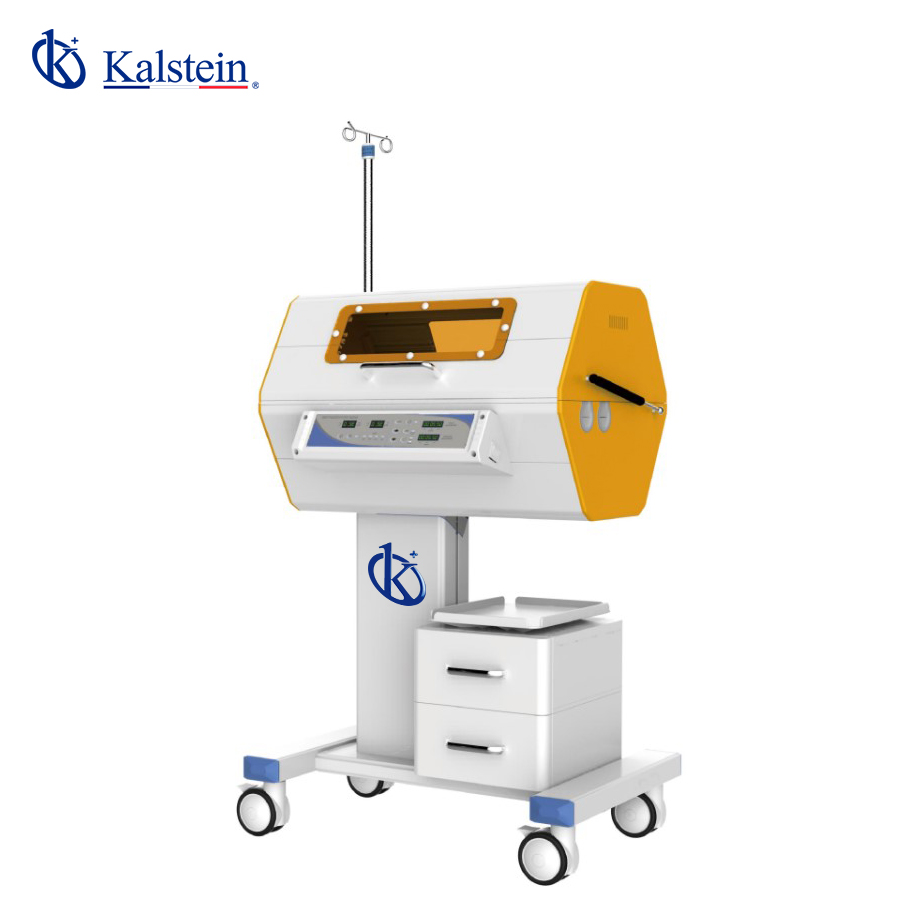Phototherapy is an essential treatment for newborns with jaundice, a common condition that occurs when there is an excess of bilirubin in the blood. Choosing the right phototherapy unit can make a significant difference in the treatment and recovery of these small patients.
In this comprehensive guide, we will explore all the necessary aspects to make an informed purchase of an Infant Bilirubin Phototherapy Unit, highlighting advanced medical technology and the best medical equipment available on the market.
We understand that you need equipment that delivers maximum value to your laboratory. We invite you to visit https://kalstein.co.in/category-product/medical-line/infant-bilirubin-phototherapy-unit/, to immerse yourself in our universe of cutting-edge technology equipment. Our prices are competitive and accessible, we combine the convenience of online shopping with the guarantee of an exceptional product. Because you deserve the best, we create and offer top-tier laboratory equipment. Make your choice today, where science comes to life. https://kalstein.co.in/
What is Infant Bilirubin Phototherapy and How Does It Work?
Phototherapy is a treatment that uses light to reduce bilirubin levels in newborns. Bilirubin is a yellowish substance produced during the normal breakdown of red blood cells. Babies with jaundice have elevated bilirubin levels that their immature liver cannot process effectively.
During the treatment, the baby is placed under a special lamp that emits light at a specific wavelength. This light converts the bilirubin into a form that the baby’s body can excrete more easily through urine and stool. Advanced medical technology has enabled the development of medical equipment that offers more effective and safer treatments.
Key Features to Consider When Choosing a Phototherapy Unit
When selecting an infant bilirubin phototherapy unit, it is important to consider several key features that can influence the effectiveness of the treatment and the safety of the patient. Among the most relevant features are:
-
Type of Light: Phototherapy units can use blue light, LED, or fluorescent light. Blue light is the most effective at reducing bilirubin levels, while LEDs are more energy-efficient and have a longer lifespan.
-
Light Intensity: The intensity of the light is crucial for the effectiveness of the treatment. Units with adjustable intensity allow for treatment customization according to the patient’s needs.
Other important features include ease of use, portability of the equipment, and the presence of alarms and safety systems to ensure the baby’s well-being during the treatment.
Advantages of Using Advanced Medical Technology in Phototherapy
The advancement of medical technology has revolutionized the treatment of neonatal jaundice, offering numerous advantages compared to traditional methods. Some of the main advantages of using advanced medical equipment in phototherapy include:
-
Greater Effectiveness: Modern phototherapy units are designed to provide optimal light exposure, resulting in a faster and more efficient reduction of bilirubin levels.
-
Enhanced Safety: Advanced equipment incorporates multiple safety features, such as temperature alarms and continuous monitoring systems, to protect the baby during treatment.
Additionally, modern units are often more compact and portable, facilitating their use in various clinical settings, from hospitals to outpatient clinics.
Comparison of the Best Phototherapy Units on the Market
Below is a comparison of the best options available on the market, including the Kalstein Infant Bilirubin Phototherapy Unit.
This table highlights the main features of each model to help healthcare professionals make an informed decision.
|
Brand and Model |
Type of Light |
Adjustable Intensity |
Portability |
Additional Features |
|
Kalstein Infant Phototherapy Unit |
Blue LED |
Yes |
High |
Continuous monitoring system, safety alarms |
|
GE Healthcare Lullaby LED |
Blue LED |
Yes |
Medium |
Energy-efficient LED technology, compact design |
|
Philips BiliTx |
Blue Fluorescent |
No |
High |
Ergonomic design, ease of use |
|
Natus neoBLUE |
Blue LED |
Yes |
Medium |
Remote control, temperature alarms |
|
Draeger BiliLux |
Blue LED |
Yes |
High |
Homogeneous illumination, integrated cooling system |
Frequently Asked Questions About Infant Bilirubin Phototherapy Units
Which type of phototherapy unit is best for my hospital?
The choice of the appropriate phototherapy unit depends on several factors, including patient volume, budget, and staff preferences. LED units are generally preferred for their energy efficiency and long lifespan, while fluorescent units may be more affordable but less efficient.
Is it safe to leave the baby under the light for long periods?
Yes, as long as the manufacturer’s instructions are followed and the equipment’s safety features, such as temperature alarms and continuous monitoring, are used. It is crucial to follow medical recommendations to ensure the effectiveness and safety of the treatment.
Tips for the Maintenance and Care of Phototherapy Units
Keeping phototherapy units in good condition is essential to ensure their effectiveness and durability. Here are some practical tips:
-
Regular Cleaning: The surfaces of the units should be cleaned regularly to prevent the buildup of dust and germs. Use cleaning products recommended by the manufacturer.
-
Periodic Inspections: Perform regular inspections of the equipment to ensure all components are functioning correctly. This includes checking the light intensity and the condition of the bulbs or LEDs.
-
Staff Training: Ensure that all medical staff are adequately trained in the use and maintenance of phototherapy units. Continuous training can prevent errors and improve the quality of the treatment.
Conclusion
Choosing an infant bilirubin phototherapy unit is a crucial decision that can significantly impact the health and recovery of newborns with jaundice. By considering factors such as the type of light, adjustable intensity, and safety features, healthcare professionals can make an informed decision and provide the best possible care for their patients.
Advanced medical technology and medical equipment, such as the Kalstein Infant Bilirubin Phototherapy Unit, represent a valuable investment in the quality and safety of neonatal treatment.


